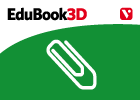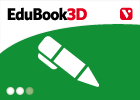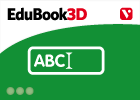Cargando...
Recursos educativos
-
Nivel educativo
-
Competencias
-
Tipología
-
Idioma
-
Tipo de medio
-
Tipo de actividad
-
Destinatarios
-
Tipo de audiencia
-
Creador
Lo más buscado
-

The five groups of vertebrates
EduBook Organización
- 2782 visitas
Fish have an elongated body and swim using their fins. Amphibians live part of their life in water. Their skin is moist and slippery. Reptiles crawl to move around. Their bodies are covered with hard…
-

Blood circulation (II)
EduBook Organización
- 2547 visitas
The heart The heart is the organ that pumps blood to all the cells in our body. It is about the size of a closed fist. Its walls are made of muscle tissue. The heart contains four chambers: The two top…
-

Answer. Unicellular and multicellular organisms
EduBook Organización
- 2510 visitas
Remember what you have studied in this section and answer the questions: What are organisms made up of a single cell called? How do they reproduce? What do we call living things that are made up of many…
-

-

How we breathe in places with no air
EduBook Organización
- 2476 visitas
We need air to breathe Humans and other animals that live on land need air to live. When we breathe, we take oxygen from the air. With this oxygen and with the food we eat, our body has the energy it…
-

-

Comprehension check (KET)
EduBook Organización
- 2277 visitas
Read the paragraphs and choose the best word for each space. There is an example at the beginning. The beautiful young woman was called Emilia Lucca. She was Gennaro Lucca's wife. When she saw…
-

Before you read 01 - How the Leopard Got His Spots (part one)
EduBook Organización
- 2271 visitas
Read the text and complete the information below. Giraffes Giraffes are very tall animals. They are light brown with a lot of dark brown patches on their body. They have long legs and a very long neck.…
-

Video: Nuclear radiations in 3Mile Island, Chernobyl and Fukushima
Educatube Organización
- 4634 visitas
In this 11 minute video (with Spanish subtitles) Helen Caldicott (Nobel Prize) explains the consequences of recent nuclear catastrophes on the human body. We can listen to specific scientific vocabulary…
-

Complete - Remember
EduBook Organización
- 2338 visitas
Complete: There are two types of machines: machines and machines. Levers, wheels, ramps and are examples of simple machines. Compound machines are made up of two or more machines working together.…
Te estamos redirigiendo a la ficha del libro...











